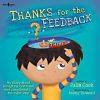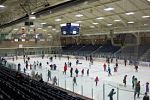Learning, Learning, and more Learning
Dear Families,
I apologize for no post last week but you will find information from last week here too. Last week, I was preparing for my presentation for one of my District workshops named Using Technology to Enhance Student Writing and then I was focussed on writing report cards. I have always enjoyed this time of year because I have an opportunity to really sit down and reflect on how your child has improved and what the next steps will be moving forward. While it does take many hours to write overall, it’s a rewarding time to see how much growth has taken place in a few month’s time. I also appreciate the way we share student’s progress here at Brentwood Park, in particular, because of how it is strength-based and how it honours student voice. Reports will be going home next Friday, February 14th.
 On Monday, January 27th, we celebrated Family Literacy Day wearing our pajamas to school. We started the day with a quick game of trivia. Then before lunch, we played a few games of animal BINGO with Mr. Ricker announcing the animals over the PA system for the whole school to play. We thought some of the animal sounds were hard to guess! After lunch, it was our turn to read on the mats in the gym. It was great to see some parents come to join us! For the remainder of the week, students were encouraged to participate in any kind of literacy with their family in the evenings. Literacy does not just mean reading. There are different kinds of literacy: math, financial, media, health, physical, and yes, even digital literacy that you can share with your children. We are well on our way with our Home Literacy Club. Some students have now read over 125 days! Please continue to encourage your child to participate. If you need a new form, please let me know. Happy to send a new one home!
On Monday, January 27th, we celebrated Family Literacy Day wearing our pajamas to school. We started the day with a quick game of trivia. Then before lunch, we played a few games of animal BINGO with Mr. Ricker announcing the animals over the PA system for the whole school to play. We thought some of the animal sounds were hard to guess! After lunch, it was our turn to read on the mats in the gym. It was great to see some parents come to join us! For the remainder of the week, students were encouraged to participate in any kind of literacy with their family in the evenings. Literacy does not just mean reading. There are different kinds of literacy: math, financial, media, health, physical, and yes, even digital literacy that you can share with your children. We are well on our way with our Home Literacy Club. Some students have now read over 125 days! Please continue to encourage your child to participate. If you need a new form, please let me know. Happy to send a new one home!
![]() Last week, we had the great pleasure to meet our student teacher from SFU, Ms. Grewal. She spent the week getting to know us and observing other teachers in the school. She is back at SFU now but will be returning on February 24 to stay with us for four consecutive weeks (with spring break in between). During this time, she will be teaching a lesson a day leading up to teaching two consecutive half or full days just before spring break. It will be a blessing for our students to have two teachers in the room to support them! Should you have any questions, please contact me.
Last week, we had the great pleasure to meet our student teacher from SFU, Ms. Grewal. She spent the week getting to know us and observing other teachers in the school. She is back at SFU now but will be returning on February 24 to stay with us for four consecutive weeks (with spring break in between). During this time, she will be teaching a lesson a day leading up to teaching two consecutive half or full days just before spring break. It will be a blessing for our students to have two teachers in the room to support them! Should you have any questions, please contact me.
 We have certainly been working hard on our reading and writing skills by learning about various strategies. In reading, we learned about making predictions and what makes a good one: how our ideas about the story would include thinking about the main characters, where the story takes place, what might the problem be, and possible solution. Then we discussed the clues that help us make these predictions (the title, pictures, headings, or something they have read before that reminds them of the book cover). Finally, we learned about various genres. We discovered that many have not even heard of the word genre before. I follow the teaching strategy: I do, we do, you do. What this means is that I model what making predictions looks like. Then we will do a prediction together. Next, students will have an opportunity to practice making predictions on their own, justifying their predictions with clues they see. If you are interested, click here to learn why making predictions is a good reading strategy to improve comprehension. How can you support your child at home? Before your child cracks open that new book from the book store or library, ask them to make a prediction and have a conversation about what clues they are using to make the prediction. Then watch their excitement when their prediction actually comes true or not!
We have certainly been working hard on our reading and writing skills by learning about various strategies. In reading, we learned about making predictions and what makes a good one: how our ideas about the story would include thinking about the main characters, where the story takes place, what might the problem be, and possible solution. Then we discussed the clues that help us make these predictions (the title, pictures, headings, or something they have read before that reminds them of the book cover). Finally, we learned about various genres. We discovered that many have not even heard of the word genre before. I follow the teaching strategy: I do, we do, you do. What this means is that I model what making predictions looks like. Then we will do a prediction together. Next, students will have an opportunity to practice making predictions on their own, justifying their predictions with clues they see. If you are interested, click here to learn why making predictions is a good reading strategy to improve comprehension. How can you support your child at home? Before your child cracks open that new book from the book store or library, ask them to make a prediction and have a conversation about what clues they are using to make the prediction. Then watch their excitement when their prediction actually comes true or not!
In writing, we have been practicing writing summaries of stories. This is an important skill to be able to learn how to pull out the main points. Summarizing improves reading skills, critical thinking skills, and writing and editing skills as they draft their summary. I have already seen growth! How you can support your child at home: After your child reads a picture book or a chapter, ask your child to summarize what happened in 1-2 sentences to practice. You can model this as well during your conversations. When your child tells you a story about something that happened to them, for example, repeat what you heard happen but in one sentence and then make it explicit by informing them you just summarized their story! It’ll make them feel heard at the same time too!
 Today, we read a story called Thanks for the Feedback, I Think by Julia Cook. It is about a boy who learns how to appropriately respond to positive and negative feedback. We learned that feedback is just information we can use to help us improve if we have a growth mindset. Click on the link above if you would like to watch the storybook read to you.
Today, we read a story called Thanks for the Feedback, I Think by Julia Cook. It is about a boy who learns how to appropriately respond to positive and negative feedback. We learned that feedback is just information we can use to help us improve if we have a growth mindset. Click on the link above if you would like to watch the storybook read to you.
In Math, we dove into addition strategies to become more fluent at mental math. Most of us probably learned how to add by regrouping but now, there is a “new way” of adding two digits plus two digits. Click on the video to view. Please review at home as it will help build their confidence at school. This is one way we practice at school: Take a deck of cards to create random numbers. Flip over two cards for the first number (addend) and then another two cards for the second number (addend). Now this is your addition equation to solve! Then we add the two tens first before adding the ones. Finally, add those together just like in the video. Feel free to ask your child to show you.
Card games to support your child at home with math facts fluency (adding to 20)
(1) Addition War: Take a deck of playing cards and remove the Jack and King. The Queen represents a zero. Divide the deck evenly between partners. Players flip one card at the same time. Whoever calls out the sum first takes the cards. Variation: Each player flips over two cards from their evenly divided deck. Both players add their own two numbers together and compare; whoever has the larger number takes the cards to add to their own deck, like traditional war except compare the sum of both cards.
(2) Today, we played Doubles War to practice our doubles with playing cards. In partners, they took turns flipping over one card at a time (Ace to 10). Whoever calls out the doubled sum first takes the card. I so wish you could have been there to see their excitement and hear their enthusiasm. Many students were popping like popcorn, jumping off the ground, as they called out their sums in hopes of beating their partners. It was so much fun to witness their enjoyment!
 (3) Go to my Symbaloo webmix and look at the bottom row. Here, you will find a number of Quizlet flashcards to practice the same math fluency strategies we practice in class like: making tens, doubles, doubles plus one, for example.
(3) Go to my Symbaloo webmix and look at the bottom row. Here, you will find a number of Quizlet flashcards to practice the same math fluency strategies we practice in class like: making tens, doubles, doubles plus one, for example.
Quizlet is one of the top rated quiz websites for review. Try out other people’s quizzes shared in the community or create ones of your own! This site really helped my son practice his French vocabulary so it’s a website to keep in mind for your children in the future too.
Practice math fluency strategies (2 digit addition/subtraction)
We practiced the Adding Ten strategy. Partners took turns to flip over two cards and the first to call out the sum of 10 more gets to take the cards. For example, flip 52. First to call out 62 earns those cards. We also practiced Subtracting Tens the same way. I challenge you to play these games at home to support your child’s learning in math. Who would win? Have your child report back to me. Kids are often motivated to practice when it means they can beat their parents.
In Science, we have continued to learn about landforms, adding islands and plateaus. I am just so thrilled to know they have thoroughly enjoyed learning in this way. I can’t wait for them to share their projects with you during our Student Led Conferences coming up before Spring Break on March 12th. Save the date!
 Ice skating next Wednesday, February 12th! We will leave school shortly after 9:00 am. Skating time starts at 9:30 am (1 hour). Click here to view field trip form for more information.
Ice skating next Wednesday, February 12th! We will leave school shortly after 9:00 am. Skating time starts at 9:30 am (1 hour). Click here to view field trip form for more information.
GRADE 3 PARENTS: Your child will need to bring a booster seat to school each time we go skating. This is the law and we cannot ask parent volunteer drivers to take children who do not have booster seats. We only have two students who would be exempt. Thank you.
To bring:
- gloves, ice sport or ski helmet, long socks
- skates (if your child owns a pair)
- booster seat if your child is not yet 9 years old or 4’9″ tall (145 cm)
Thank you so very much to our volunteer drivers! We definitely cannot participate in these skating sessions without your help and support. We are so grateful to the parents of Ana, Eva, Kyle, Lauren, Isaac, Lucas C., Max, and Yunsoo!
Unfortunately, we are still short rides for 3 students on February 18 and March 3. I will be driving on all of our skating days too. If you can help out, please let me know. If you are not comfortable driving other students, even if you bring your own child to and from the rink, that will help too. Thank you.